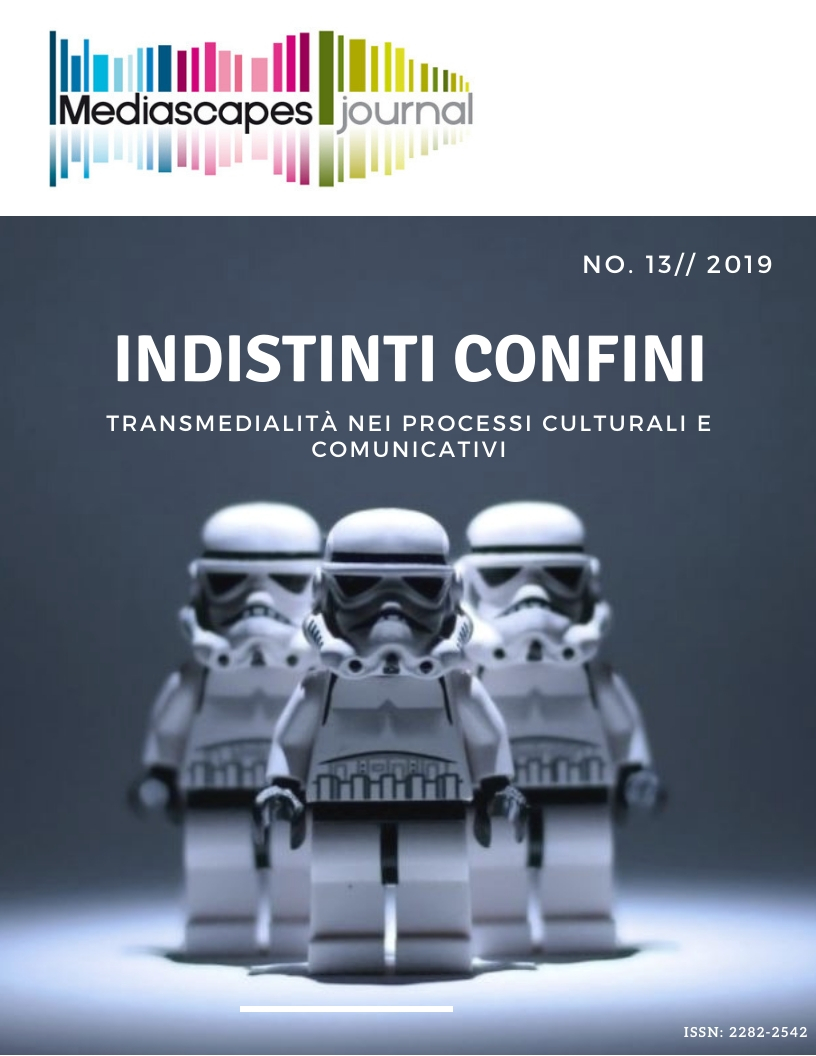Da Triumph des Willens a Der Fuehrer's Face: Forme aurorali di transmedialità nella propaganda della Seconda guerra mondiale
Abstract
Media were one of the main battlefields of the Second World War: propaganda, censorship, and counter-propaganda activities forged the imagery of war, selectively informing millions of people through a network of visual media: films, newsreels, animated short films, and comics. This article aims to highlight a specific transmedia path that involves the United States and Germany. The extremes of this trajectory are the film Triumph des Willens (1935) by director Leni Riefenstahl, and the Disney short film Der Fuehrer's Face (1943). Riefenstahl's film focuses on the Nazi Nuremberg Rally of 1934 and has been interpreted from time to time as a form of documentary testimony, propaganda product, or cinematographic art. Each of these dimensions is present in the film, which became a primary reference for the imaginary of the twentieth century. Between 1942 and 1945, the American director Frank Capra made a series of short films for war newsreels: Why We Fight is perhaps the most famous example of American counter-propaganda, and takes entire sequences of the Triumph. The transition between German and American media shows not only the migration of images but a particular appropriation which re-signifies German propaganda by turning it against itself. We also find satirical forms: in 1942 the British government distributed Lambeth Walk, a short-film that reworked Riefenstahl's work to ridicule Hitler, combining a famous popular song with the images of marches and parades. In less than a decade Triumph des Willens shows its great seductive power, and its influence its traced in famous works of American cinematography; an example is The Great Dictator (1940) by Charlie Chaplin. The linkages of transmediality expanded very soon, involving animated short-films and comics in 1942, two mass media that were an integral part of the American propaganda. Without the Riefenstahl's films, one could not comprehend a short-film like Der Fuehrer's Face, produced by the Disney studios for the American public and its allies. This Disney short-film won the Academy Award, and still maintain its effectiveness, so much so that in 2010 it was censored by a Russian court as “extremist material”. The play of echoes and cross-references between media clearly shows the communicative nature of propaganda, that is, the selective and positive control of information (for emphasis). Thus, censorship is the inevitable complement, through a selective denial. Censorship seeks to limit the seductive power of images, that excess of meaning which cannot be totally enunciated or rationalized but only perceived. Satire also testifies the active power of images, rendered through a re-signification that defuses the narrations of authority. Unlike censorship, which hides, satire shows to criticize, through an illegitimate appropriation of imagesDownloads
Published
How to Cite
Issue
Section
License
Mediascapes Journal is published under a Creative Commons Attribution Licence 4.0.
With the licence CC-BY, authors retain the copyright, allowing anyone to download, reuse, re-print, modify, distribute and/or copy their contribution. The work must be properly attributed to its author. It should be also mentioned that the work has been first published by the journal Anuac.
Having published these contributions for the first time, Mediascapes Journal will have the right to publish them integrally or partially as reprints or possibly as part of a thematic issue, in both digital and printed format.
It is not necessary to ask further permissions both to author or the journal.


